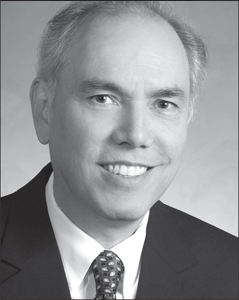ELI Report
Research Paper Filling the gaps in state programs to protect Waters of the United States in a post-Sackett world
The wake of May’s Supreme Court decision in Sackett v. EPA, combined with a rule change issued by the agency in August, has shifted the legal protections afforded to Waters of the United States, known commonly as WOTUS, under the federal Clean Water Act. These actions place a substantial burden on state and tribal regulators and legislators to protect waters within their jurisdiction.
In May, ELI published a research paper titled Filling the Gaps: Strategies for States/Tribes for Protection of Non-WOTUS Waters. The study identifies which states are reliant on the federal agency’s definition for protection of freshwater wetlands and tributaries from dredge and fill, which states have limited coverage for non-WOTUS waters, and which states have comprehensive permitting programs applicable to their waters that may fall outside of federal coverage under the act.
The report goes in depth into states with fairly comprehensive permitting programs applicable to their waters (i.e., wetlands) including those that fall outside the coverage of the federal CWA. These are California, Connecticut, Florida, Maine, Maryland, Massachusetts, Michigan, Minnesota, New Hampshire, New Jersey, New York, Oregon, Pennsylvania, Rhode Island, Tennessee, Vermont, Virginia, Washington, and Wisconsin. This section also makes comparisons between states in this category, demonstrating how the coverage of these programs varies.
The study includes a number of states that have adopted specialized laws and regulations, or in some states case-by-case review practices, that are expressly intended to fill identified gaps in federal CWA coverage. These states provide some regulatory protections for identified classes of non-federal waters, including certain of their nontidal wetlands.
Some states provide regulatory authority and funding to specific activities affecting protected waters. The seven states with limited or gap-filling regulatory coverage are: Arizona, Illinois, Indiana, North Carolina, Ohio, West Virginia, and Wyoming, plus the District of Columbia. The report includes a comparative analysis among all of these regulations.
In addition to statewide programs, the report looks at alternative or supplemental approaches that may protect non-WOTUS waters. These approaches include state or local regulations of activities to protect buffer areas adjacent to waters and wetlands; local regulation of wetlands/waters (as authorized by state law or by home rule); regulation of particular activities rather than of specified waters; conservation planning; water quality standards for certain non-WOTUS water; conservation banking with protection for wetlands/waters; voluntary conservation and restoration programs; and hazard mitigation or resilience.
The study also includes an analysis of tribal wetlands programs. The CWA authorizes EPA to treat tribes with reservations as similar to states, allowing these tribes to administer regulatory programs and receive grants under CWA authorities.
Tribes may also develop regulatory programs under tribal law and create non-regulatory programs to protect, manage, and restore wetlands on their lands. More than 40 tribes have submitted independent wetland program plans. Tribal wetland programs, as do state programs, vary widely.
A good deal of investment is needed at the state and local level to ensure that the critical functions provided by wetlands and other waters are not lost.
TSCA conference takes up reducing PFAS in the environment
The Toxic Substances Control Act Annual Conference is hosted by ELI, Bergeson & Campbell, P.C., and the George Washington University Milken Institute School of Public Health. Each year, the conference brings together premiere TSCA experts to reflect on challenges and accomplishments since the implementation of the 2016 Lautenberg Amendments.
This year, Lynn Bergeson and Bob Sussman started off the program with broad reflections on the current state of TSCA implementation. Following that, EPA Assistant Administrator Michal Ilana Freedhoff gave a keynote discussion, announcing the EPA Framework for Addressing New PFAS and New Uses of PFAS.
The first panel discussed various aspects of EPA’s risk evaluation of chemical substances. The panelists covered the agency’s potential use of European Union REACH data, EPA’s use of new approach methodologies, the effectiveness of a “whole chemical approach” to risk determinations, and the incorporation of cumulative risk assessment in TSCA risk evaluation.
The second panel discussed EPA’s authority under the Lautenberg Amendments to manage chemical risks. The discussion included how the agency manages workplace risks, enforcement mechanisms for risk management restrictions, whether EPA’s risk management rulemakings are adequately addressing environmental justice concerns, and potential legal challenges to final risk management rules.
This year’s conference featured five former assistant administrators who oversaw EPA’s toxics office.
The third panel discussed new-chemical review under the 2016 revision of TSCA. Panelists covered transparency, processes to guide new-chemical review, new approaches to assess chemical risks, concerns for workers and fenceline communities, and recent trends with EPA’s review of new-chemical substances.
The final panel discussion covered the unique role of TSCA, as compared to other EPA programs, in addressing the issue of PFAS. Experts discussed the agency’s working definition of PFAS, the effectiveness of TSCA implementation in addressing PFAS, whether PFAS should be regulated on a category or chemical-specific basis, and more.
Speakers included Shari Barash, Lynn Bergeson, Madison Calhoun, Jordan Diamond, Maria Doa, Emily Donovan, Alexandra Dapolito Dunn, Richard E. Engler, David Fisher, Michal Ilana Freedhoff, Eve Garnet, Lynn Goldman, Ben Grumbles, Rashmi Joglekar, Jim Jones, Jonathan Kalmuss-Katz, Matt Klasen, Pamela Miller, Jeffery Morris, W. Caffey Norman, Steve Owens, Steve Risotto, Daniel Rosenberg, Jennifer Sass, Robert Sussman, Brian Symmes, and Meredith Williams.
ELI members can access a recording of the entire TSCA conference and all associated materials as part of their membership on the ELI website.
Nashville signs order on reducing food waste
A new Model Executive Order on Municipal Leadership on Food Waste Reduction developed by the Environmental Law Institute and Natural Resources Defense Council can help localities reduce the amount of food wasted throughout municipal operations, highlight the importance of reducing food waste, and demonstrate food waste reduction measures that businesses and other entities may voluntarily replicate.
The model was developed as part of ELI’s Food Waste Initiative, which aims to help stakeholders meet U.S. food loss and waste goals by implementing public policies and public-private initiatives to prevent food waste, increase surplus food rescue, and expand scrap recycling.
Up to 40 percent of food in the United States is wasted. Local governments are well-positioned to address the problem. Given the large amount of food that some municipalities procure and the many people that they employ, the impact of food waste reduction measures in municipal operations can be substantial.
The model offers a range of municipal measures to reduce food waste that include staff training and hiring, procurement policies, and employee benefits.
Recently, Nashville adopted a resolution in support of two key measures in the model: a food waste reduction goal and adoption of best food waste reduction practices by municipal departments.


Filling the Gaps in State Programs to Protect WOTUS




